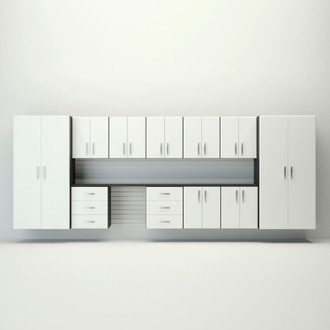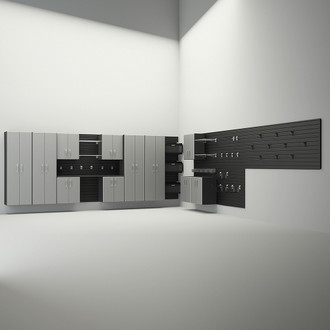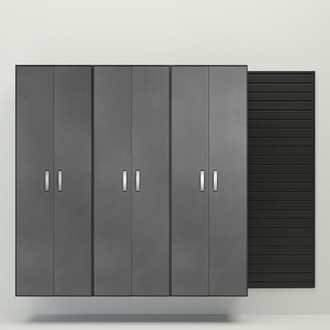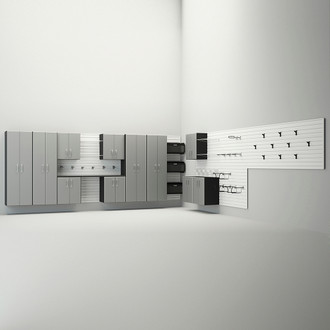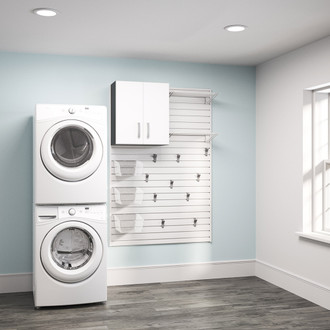You can open your door and be greeted with an entire week’s worth of groceries—without ever having to leave the house. Heck, you can even manage to feel freezing cold on a hot summer day. (Thank you, office AC! You are a miracle, even though we sometimes despise you.)
The fact that just about anyone in the world can broadcast their own audio show to the entire planet is just another marvel of the modern age. Whether you want to get paid to recap The Bachelor episodes, or enjoy a new hobby interviewing your favorite plant moms, the world is your oyster. Anything is possible when you’re building a home podcast studio!
Check out our guide to learn everything you need to know about how to set up a podcast studio at home in your garage and the best home podcast studio ideas.
1. Consider Your Budget
Good news! Your podcast studio can be totally awesome no matter how much money you have to spend. So let’s be realistic—no need to go all-out when you don’t have serious cash in the bank. Start small, and if your podcast really takes off, you can build from there. Decide on a budget so you can keep things reined in once you get the ball rolling.
2. Make Space for Your Studio
Before you can create your home podcast studio design, you’ll need to know how much space you have to work with. If you’re willing to park on the driveway or street, you may have a large footprint for your podcast studio. (That is, if you’re not eligible for an episode of Hoarders. Yikes!) But don’t sweat it if you only have a small corner of the garage to dedicate to your podcasting hobby. You don’t need much room to produce an epic show.
3. Design Your Home Podcast Studio
Now it’s time to let your imagination run wild by designing your podcast studio. Only, don’t get too wild—this does need to be a functional space that fits within your budget. Consider the size and shape of the garage space, as well as other factors like ventilation and lighting.
4. Soundproof Your Studio
Soundproofing is an essential part of having a professional-sounding podcast, so even though it requires more of an investment, don’t even think about skipping this step! Seal off doors, use sheet blocks to soundproof walls, and add drapes or shelves to keep sound from bouncing around the garage. Even simple elements like a rug or couch will help to absorb sound.
5. Bring Your Vision to Life
With your studio ideas put down on paper, it’s time to bring them to life by investing in your home podcast studio equipment. Of course, this includes lighting, furniture, and essential podcast equipment, such as:
Computer
Microphone
Audio software
Mixer
Headphones and amplifier
Windscreen
Microphone stand and cables
Editing software
Shock mount
There's never been a better time to get your voice out into the world
Tips for Building Your Home Podcast Studio
By following these steps, you’ll soon be ready to hit the airwaves in your very own podcast studio. Here are a few more tips to ensure the process goes off without a hitch:
Hosting sites: Don’t forget to invest in podcast hosting and website hosting. (No podcaster ever made it anywhere without actually putting their content out into the world.) Libsyn, Buzzsprout, and Zencast are all popular hosting options.
Audio software: Stumped on which audio software to choose? GarageBand and Audacity are both popular (and free!) choices for beginners.
Microphone positioning: Leave room for sitting 8-10 inches away from the microphone, which is the best distance for capturing vocals.
Producing the optimal sound: Limit echoey sounds by keeping the area around the microphone open and free of clutter.
Audio file format options: Save your audio in WAV or AIFF format for the editing process—this will give you better quality audio in comparison to MP3.
Designing a podcast cover: There are a million podcasts out there. Make sure yours stands out by investing in an eye-catching podcast cover. (So yeah, don’t make yours in Microsoft Paint. Wait—does that still exist?)
Choosing the right microphone is key
It’s Time to Record
You have the ideal home podcast studio space; now it’s almost time to hit the record button! But before you get started, make sure you have all the tools you need for an organized, professional-level podcasting zone. Head to Flow Wall to find the most convenient shelves, wall panels, bins, and cabinets for your space—then go forth, and create





